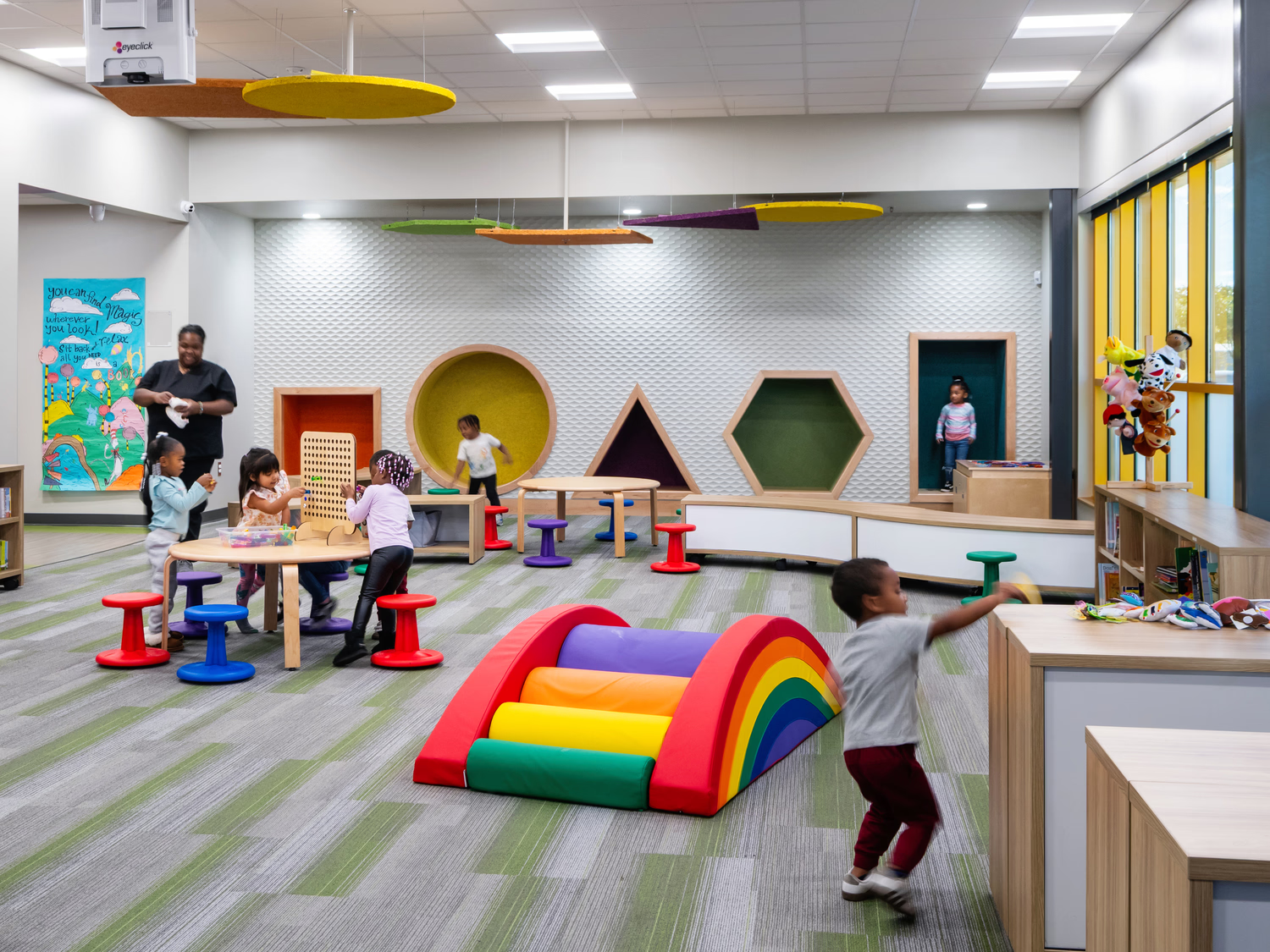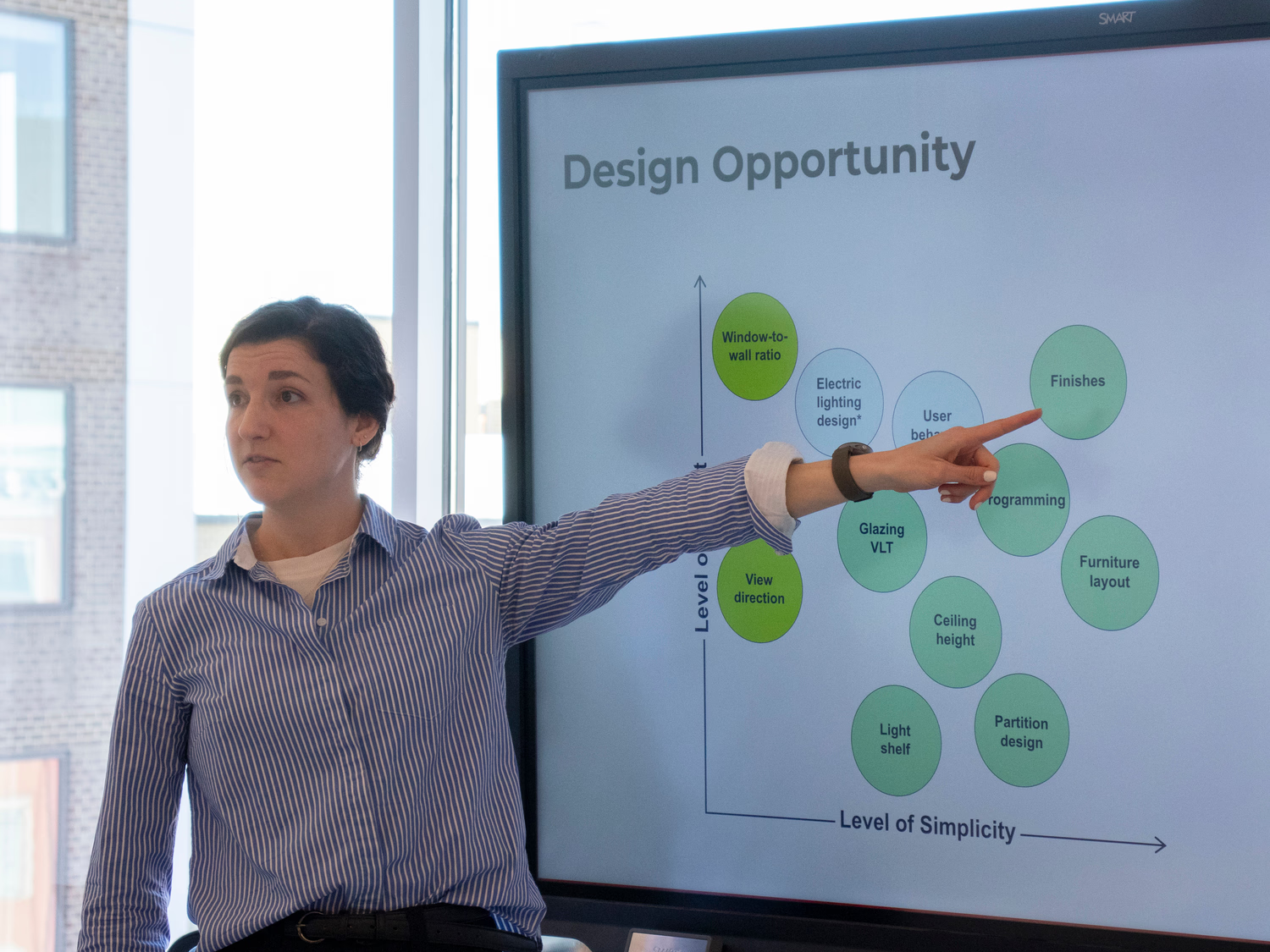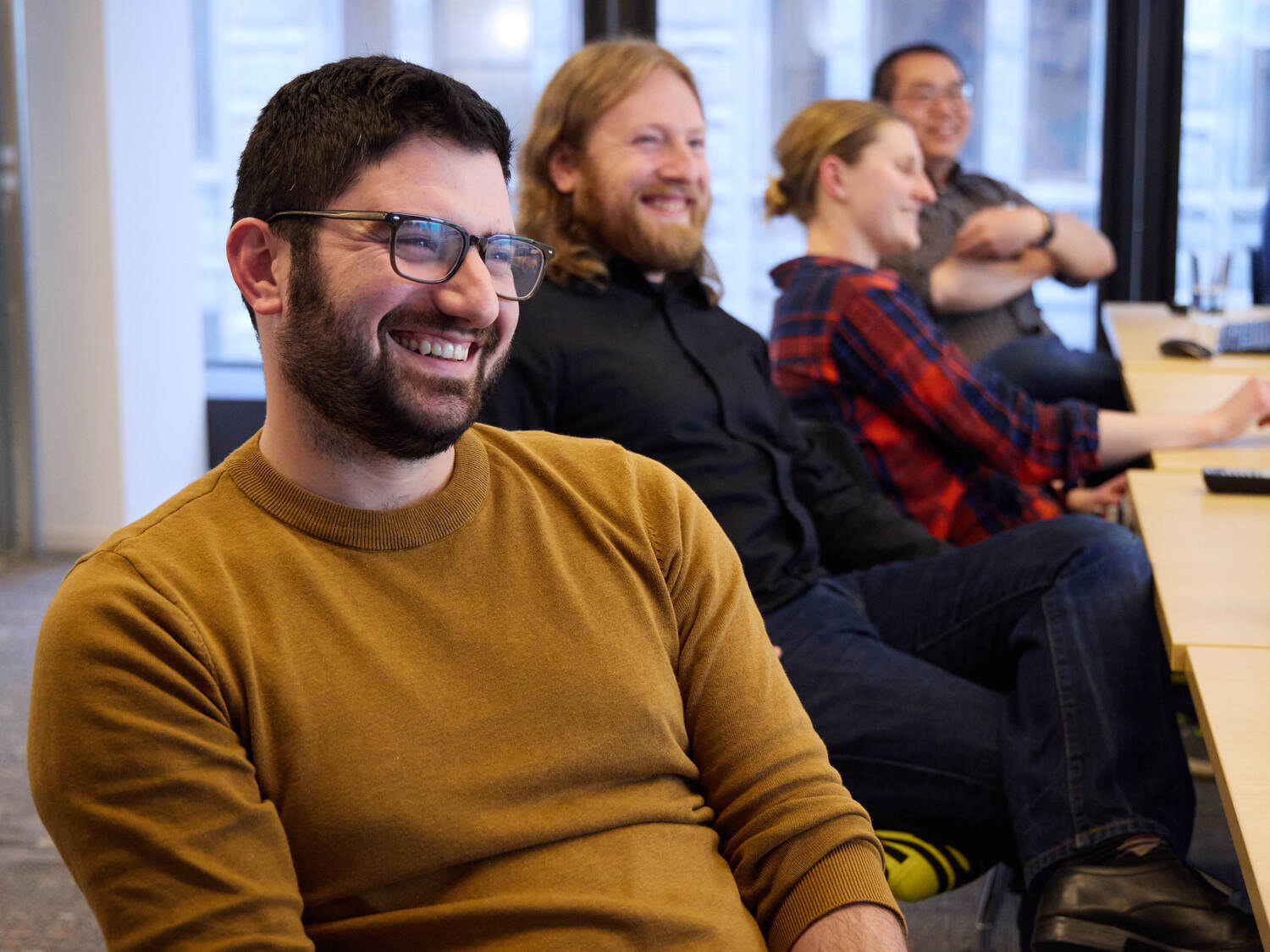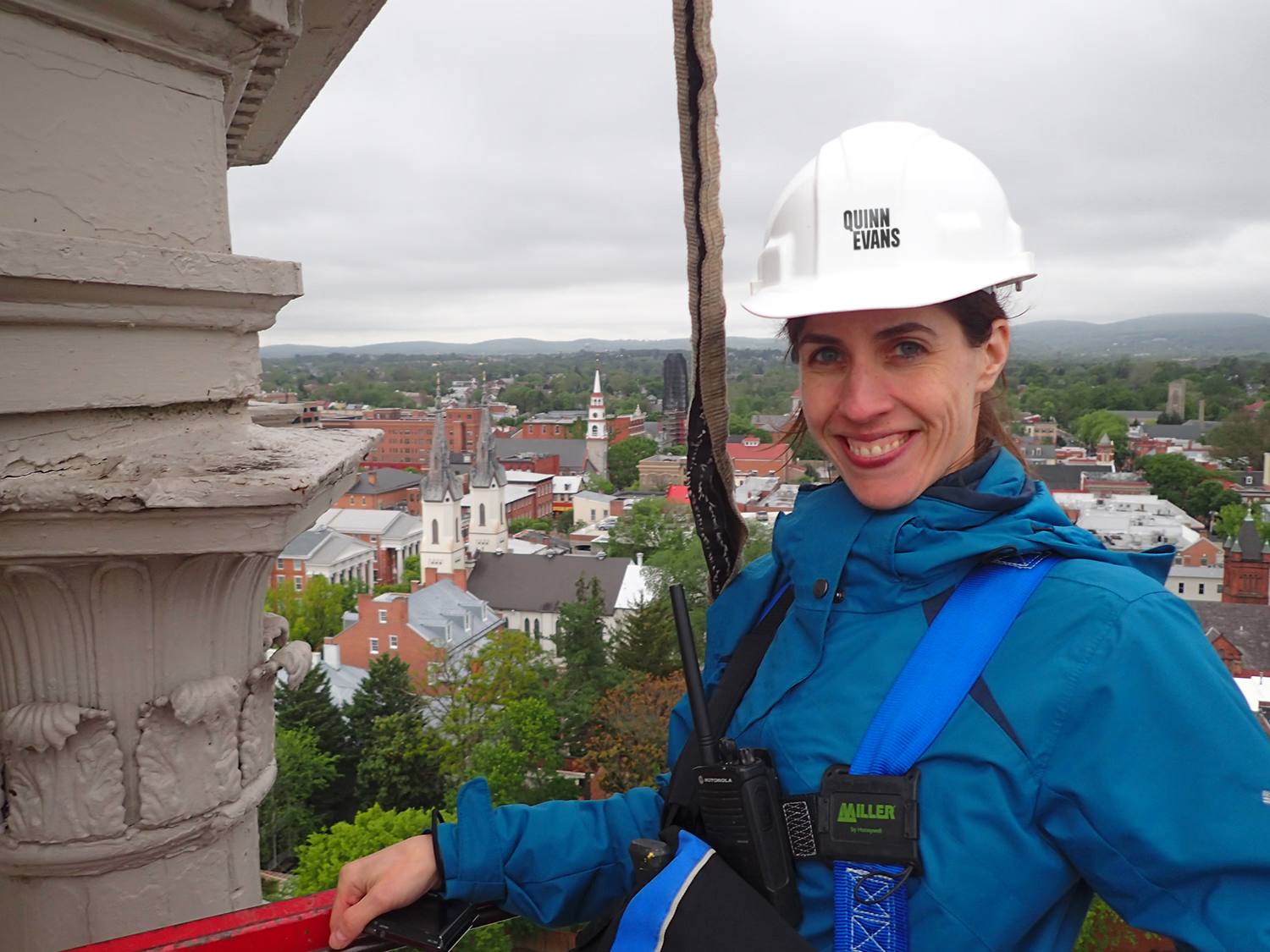Preservation is a field rooted in the past, but the tools that we use to achieve it don’t have to be.
CHARLES THOMPSON
Our approach to historic preservation is people-focused: we strive to adapt historic buildings and places to perform better and meet their communities’ needs. In the course of this work, we advance the art and science of building reuse by applying the latest research, tools, and methods. We find that design thinking – informed by the synthesis of the best available information – accomplishes better, more resilient, and more holistic outcomes for both people and places.

Why Preservation?
We value existing places as the embodiment of the invested ideas, labor, and resources of generations past. Old buildings are large-scale artifacts that document and remind us of our shared history. Renewing them preserves both community memory and embodied carbon.
Thanks to our roots in historic preservation, we take a long view of the built environment. Also called life cycle thinking, this perspective recognizes that we are just the latest in a long line of stewards – of the buildings and places we touch, and of our planet. By revitalizing existing buildings, we connect people to place and reduce carbon emissions.
This is not to say that we oppose change. Rather, we believe historic places must be adapted to remain relevant and functional in the modern world. The key is to manage necessary change sensitively.
We're not here to protect things just because they're historic. We're asking what the community needs from this place.
STEPHANIE REDDING

Leading the Pack
Somewhat paradoxically, our most seamless interventions in historic fabric have been accomplished using cutting-edge practices. We’re innovating in the areas of standardization, documentation, building science, and sustainability, using the latest tools and technologies to make informed decisions that facilitate stewardship.
SETTING NEW STANDARDS
Standards keep everyone on the same page. For stewards of historic places, standardization makes it easier to sift through the complex layers of the past to inform today’s decision-making.
We recently worked with the National Institute of Building Sciences (NIBS) on standards for Existing Building Information Modeling (EBIM). This will help historic and existing building owners who need to preserve data that exists in many different locations and formats, making it difficult to retrieve. We developed EBIM documentation standards that address common stewardship challenges at multiple scales. Interoperability ensures that stewards can continue to access their information as platforms change.
For stewards of historic landscapes, we have made great strides in adapting the National Park Service’s (NPS) Cultural Landscape Report (CLR) for smaller agencies and organizations. The CLR is a powerful tool for describing the history of landscape, including its change over time; analyzing its existing condition; and recommending a course of action to preserve it. Not every client needs the intensive level of detail that comes with a full CLR, but NPS’s CLR standards provide a useful framework for other stewards of historic landscapes. We have adapted the CLR format to the needs of state and local park operators.

INNOVATION IN DOCUMENTATION
Like robust standards, quality documentation is important for stewards of historic places. Accurate records inform decision-making now and will also be used by tomorrow’s caretakers.
We use Layer, a cloud-based app launched in 2019, to streamline our survey process. Layer can associate information captured during survey, including field notes and photos, to elements in the Revit model. This way, we don’t need to spend time after each survey session transcribing notes or organizing photos – which gives us more time for analysis and design.
The model created by tagging survey information to Revit is a powerful stewardship tool. Even more powerful is Historic Building Information Management (HBIM) – a holistic documentation platform that integrates historic records into the building model. We have long been at the forefront of HBIM, having developed an early HBIM model for Mount Vernon. Today we are taking the technology one step further at the Michigan State Capitol by integrating operational information into the model as well. This new layer of information – a “digital twin” of the building – allows stewards to view both historical information and current building performance in the same interface. The upgraded HBIM dashboard allows the Michigan State Capitol Commission to monitor a variety of metrics in real time, including temperature and humidity levels in areas with especially delicate historic fabric.
In addition to using advances in documentation to help stewards care for their buildings, we recently used it to re-create missing historic elements. At Michigan Central Station, much of the original ornamental ironwork had been lost. We collaborated with Ford’s Research & Innovation Division to replace missing pieces with 3D-printed replicas. Ford’s engineers scanned existing fragments, extrapolated the original design via computer modeling, and printed custom infill pieces in thermoplastic polymer, which we integrated back into the existing framework.
.jpg)
BUILDING SCIENCE FOR HISTORIC PLACES
We know from long experience that old buildings perform differently than new ones. Built with uncommon materials and before standardized details, every historic building has unique patterns of air and moisture movement. We use the latest in building science and computation tools to arrive at sound design solutions for each building.
A 1930s-era federal office building in Washington, DC, had inefficient windows that were allowing heat and cold into the building. We developed several potential window-based solutions to increase the building’s sustainability and meet security requirements, from refurbishing the historic windows and frames to completely replacing them with new ones. After thermal and hydrothermal analysis using tools like THERM and WUFI, we determined that adding new storm windows behind the historic ones delivered the best balance between performance and maintaining the building’s historic character.
The new exhibit area at the Lincoln Memorial offered a different glazing challenge. One of the National Park Service’s major goals for the project is to allow visitors to see into the undercroft beneath the memorial. Our design features a glazed curtainwall that will provide dramatic views of the memorial’s foundations. We explored multiple solutions to keep the glazed walls free of the condensation that would naturally develop when the warm, humid air in the undercroft encountered glass cooled by the air conditioning in the new space. The solution was radiant glazing, or glass that is heated by electrical resistance. This technology will keep the glazing clear while using far less energy than other options we studied, like conditioning the entire undercroft.

SUSTAINABLE STEWARDSHIP
We continue to push the envelope of energy performance in historic buildings and places. We call this practice sustainable stewardship – adapting invaluable places to reduce their impact on our planet.
Construction is almost complete on the Compound Rowhomes, our first building reuse project targeting Phius certification. Our design includes robust insulation, efficient building systems, and a rooftop photovoltaic array. We estimate that the occupied building will have an energy use intensity (EUI) of 8.6 kBtu/sq ft/year, almost all of which will be generated by the solar panels.
The Packing House is our latest LEED certified historic building. This adaptive use of a former tomato canning factory attained LEED Gold certification this year, joining 15 other LEED certified, pre-1940 projects in our portfolio. We retained approximately 95% of the existing building fabric, equaling almost 2,700 metric tons of embodied carbon.

The Future of Preservation
Historic preservation has changed dramatically since the passage of the National Historic Preservation Act in 1966. From utilizing cutting-edge tools and technologies for building stewardship to inserting race and equity into the conversation surrounding why and how places are saved, our approach to preservation is focused on making existing places work better for today’s needs. We respect the enormous investments generations before us have made in the built environment – because buildings embody money, labor, and carbon we can never get back. At the same time, they must support modern uses and users to remain relevant. By developing a deep understanding of a place and its historical context, we devise solutions that help communities thrive.








